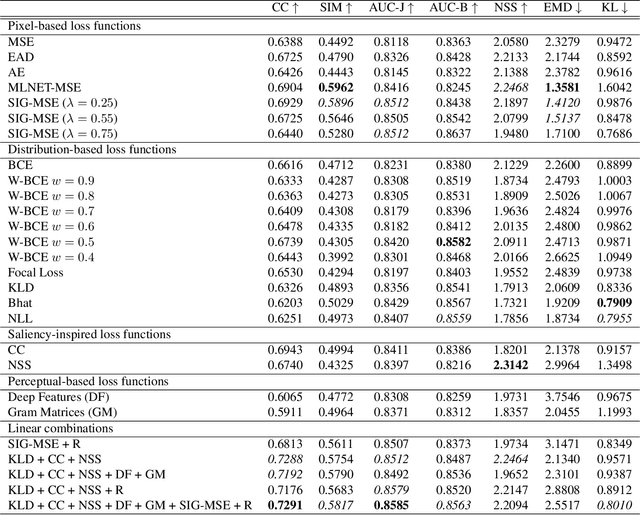Deep Saliency Models : The Quest For The Loss Function
Paper and Code
Jul 04, 2019



Recent advances in deep learning have pushed the performances of visual saliency models way further than it has ever been. Numerous models in the literature present new ways to design neural networks, to arrange gaze pattern data, or to extract as much high and low-level image features as possible in order to create the best saliency representation. However, one key part of a typical deep learning model is often neglected: the choice of the loss function. In this work, we explore some of the most popular loss functions that are used in deep saliency models. We demonstrate that on a fixed network architecture, modifying the loss function can significantly improve (or depreciate) the results, hence emphasizing the importance of the choice of the loss function when designing a model. We also introduce new loss functions that have never been used for saliency prediction to our knowledge. And finally, we show that a linear combination of several well-chosen loss functions leads to significant improvements in performances on different datasets as well as on a different network architecture, hence demonstrating the robustness of a combined metric.
 Add to Chrome
Add to Chrome Add to Firefox
Add to Firefox Add to Edge
Add to Edge